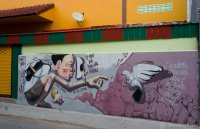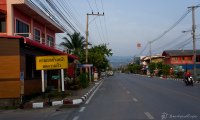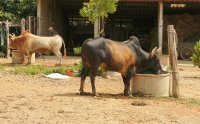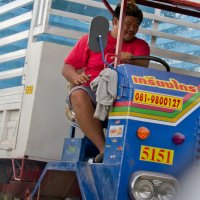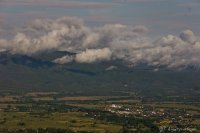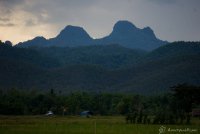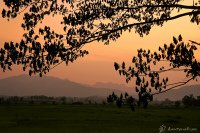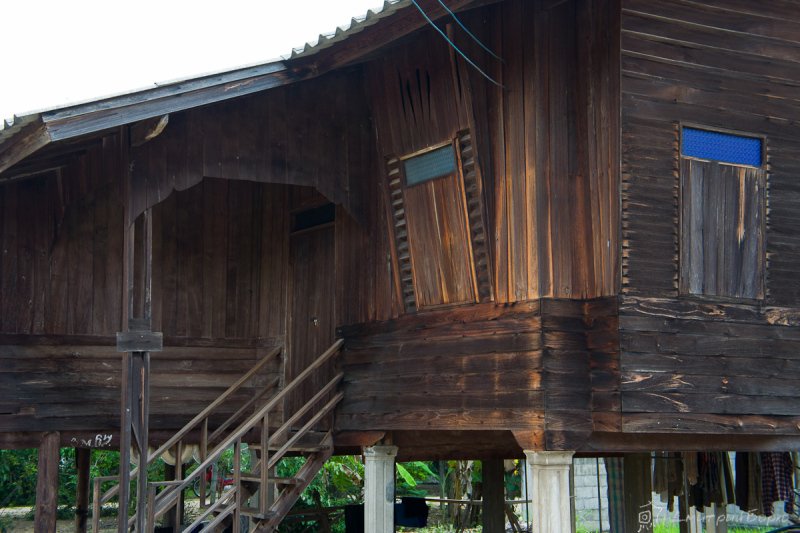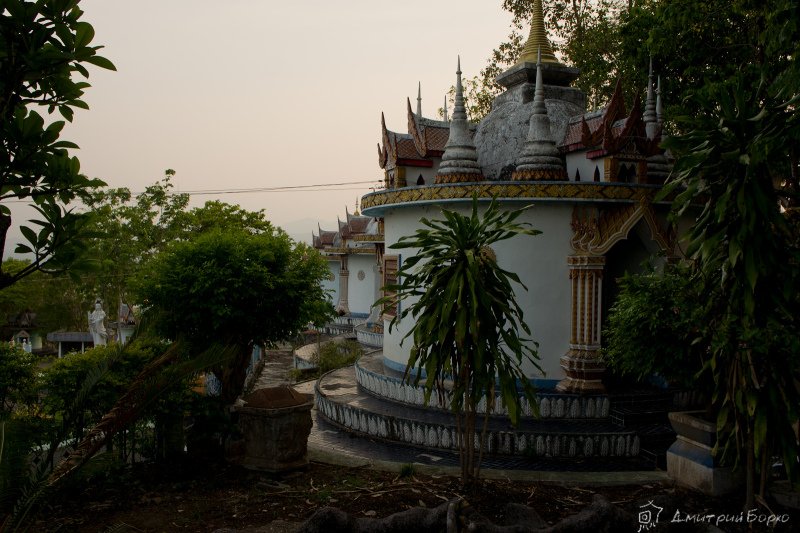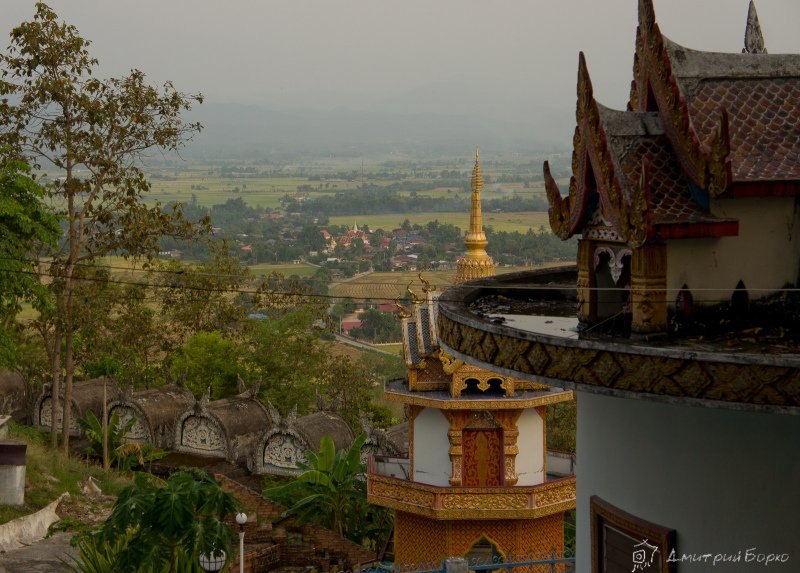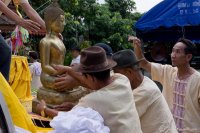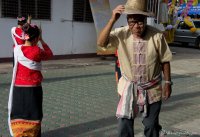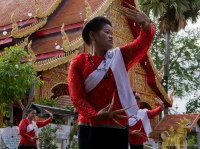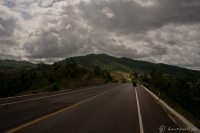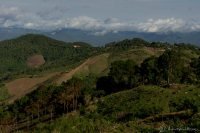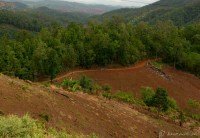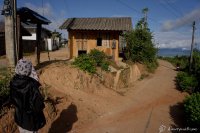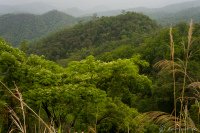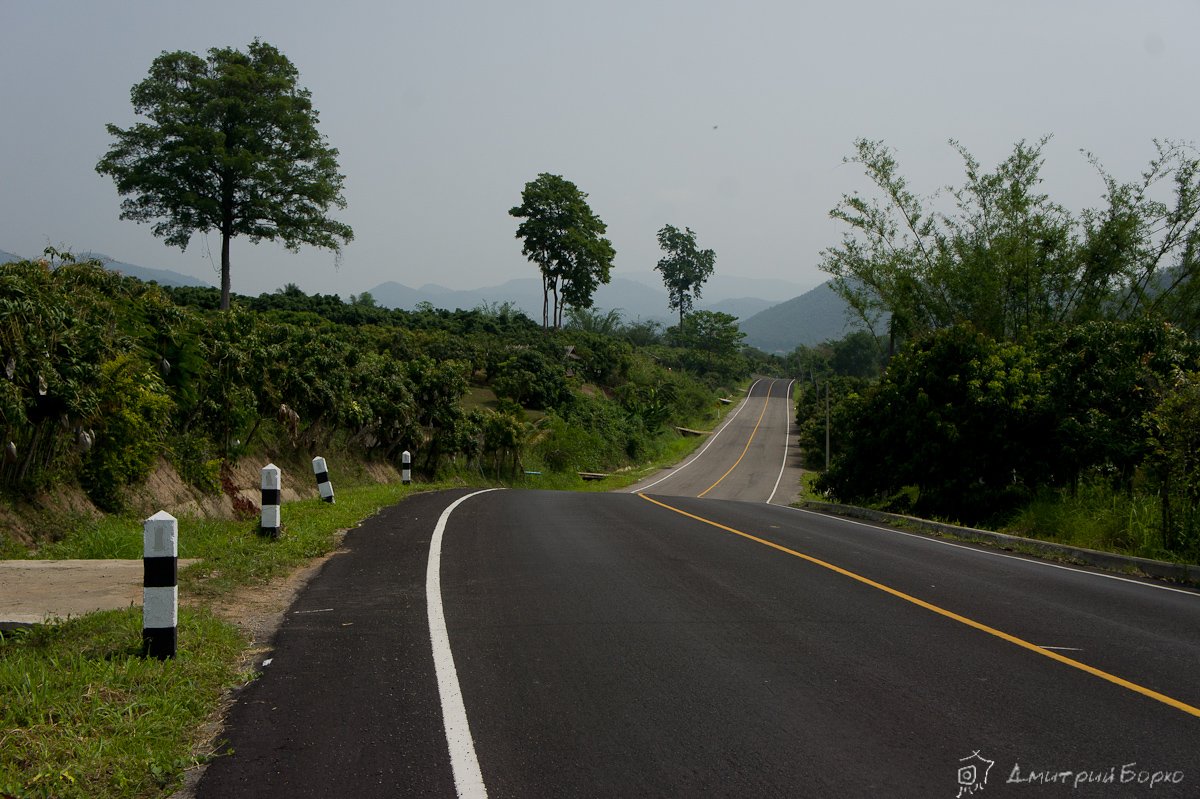Almost nothing is written about this small valley, adjacent to Chiang Mai from the north. Probably because the only attraction on the way to the Phrao Valley lies on the hills separating it from Chiang Mai, but also on the Chiang Mai side. This is the “white” Buatong waterfall. Indeed, a strange place: a not very powerful stream rushes almost vertically down the rounded, like bubbles, almost white rocks. They are notable for the fact that it is easy to walk on their rough rock, descending and ascending directly along the flowing water. The leg seems to stick to the surface. In addition to the “sticky” surface of the stones, there are practically no overgrown algae on them. Which usually make any river stones extremely slippery and dangerous.
Thais love to equip waterfalls for picnics. There are also paddling pools in which “compote” of kids is splashing, and a good entrance, and a shop with a simple eatery (Som Tam, sausages, noodles), and even rugs for rent. Shady, green, beautiful view of the forested hills from the upper platform. True, it is crowded on weekends – people come in large groups and settle down under the trees on the grass with food, children and music. A little to the side – a very fabulous and, as expected, “sacred” spring with clearly sulphurous bluish water in a deep barrel. In it, as in a kaleidoscope, small fish, some kind of silvery suspension and pieces of algae are constantly moving and rising from the bottom along with jets of water emerging from the ground.
A cozy, all in flowering trees, highway No. 1001 leads here from Chiang Mai. Shortly after the waterfall, having crossed low hills (usually separating the valleys from each other, and at the same time serving as the borders of the districts), the highway descends into the Phrao Valley. It is much smaller than Chiang Mai: standing on any of the surrounding slopes, it is easy to take in the whole view. The usual northern Thai valley, of which there are dozens. Surrounded by mountains (somewhere higher, some lower), filled with rice fields, gardens and villages. The skates of temples stick out from everywhere, however, they are not particularly remarkable and rather new.
The highway ends directly in the central square of the town of Phrao – the local “capital”. It is exactly 100 km from Chiang Mai. The town is also typical of the north – tiny, very quiet and incredibly clean. However, its small “business” part has everything: a full-fledged and very cheap market, a couple of banks, “7/11” and “Mini Tesco”, several quite decent “food” and even a couple of cafeterias with simple pastries. The town seemed to me more “colorful” than others. In general, the Phrao Valley was remembered for its bright and deep colors – both nature and even the coloring of funny local trucks and combines working in the fields. Perpendicular to 1001, having become the main street for a while, another highway passes through the town. It crosses the valley from west to east, leading in one direction to Chiang Dao, and in the other to the Chiang Rai valley.
Before coming here, I read a thread from some forum in 2009, where several sophisticated Europeans discussed Phrao as a very nice town, but “there is absolutely no place to stay here, and they only speak Thai.” Five years later, I found a completely different picture. Half a kilometer east of the city center, on the main street-highway, 3-4 pretty resorts from wooden bungalow houses on high “legs” for 300 baht were found (staying alone, I even paid 200). Their hostesses spoke quite tolerably in English. In the place where I spent the night, there were all signs of civilization: a refrigerator, a TV, a couple of bottles of drinking water, clean linen and even quite tolerable Internet. The resorts are already coming out to the fields in the back, and the silence there in the evenings is simply deafening! Only a cloud of insects flies into the light, but if you do not light it, you can even sit in the evening on a small veranda.
In the valley you can find several clearly “ethnic” villages. True, it is rather difficult to determine which nationalities live in them. The faces are distinctly different from typical Thai, but unlike the “commercial tribal” villages, everyone is dressed in a modern and worker way. There are wooden houses of interesting design. All the charm of the Phrao Valley is in the valley itself: its soft and juicy nature, the calm unhurried life of people busy with their work, in their calm friendliness. And stunning pink sunsets over rice fields and misty mountains. You should come here to listen to the silence and feel the rhythm of rural life. Meditate. Eat simple food, wander aimlessly.
Here, as elsewhere in the North, they still build from wood. It is often difficult to recognize which house is 150 years old and which is 10. Moreover, if the tree is silvery with whitish gray hair, this only means that the teak from which the house is built has not been processed. He turns gray pretty quickly. The treated wood has a noble golden hue. Apparently, nevertheless, the gray house is noticeably older.
At the northwestern end of the valley, on a hill, stands a strange desert temple complex with outlandish round houses – either monastic kuti, or meditation rooms. When I got there, there was only one woman doing housework and a bunch of beautiful cats. Apparently, this is a kind of meditation center, either half-abandoned, or unfinished yet. It offers an elegiac view of the valley. But there were also several Christian churches in the valley. Most often, Christianity is professed precisely by “non-indigenous” mountain peoples – the Hmong, Karen and others.
When we once again stopped at Phrao with Anya, some local holidays were clearly celebrated here. We have seen the delivery of the new main “horn” for the roof of the temple. One of the temple Buddhas on a wagon was sent to follow him around the village.
Having taken the sacred item and having traveled around the village, the procession returned to the temple, the Buddha took his place under the canopy, and the horn was solemnly hoisted onto the roof. The ceremony was accompanied by a folk dance performed by a dozen marvelous local aunts. In all these countless local rituals that make up Thai life, the surprisingly natural combination of indifference and seriousness is most captivating. On the one hand, raucous music from the speakers accompanied the dance and constantly caused explosions of laughter in the dancing matrons. On the other hand, we noticed the gesture of one of the peasants, who furtively stroked the Buddha, when he was clumsily pulled off the truck with ten hands. There were so many personal feelings in this gesture – tenderness, gratitude …
If we talk about the “sights” of the Phrao Valley, then these are undoubtedly the roads! The most amazing – leading to the east, to Chiang Rai. About 50 kilometers through quite high mountains and completely wild forests. Red rocks, cedars, piercingly clean air and birdsong. And opening to the right, then to the left are magnificent panoramas, stretching into the endless distance of mountains and forests. There are several villages along the way. The inhabitants of the first are clearly representatives of Chinese culture, but we did not understand more. They say there is another large Lisu village. We did not dare to turn into one village: an almost sheer clay path led to it from the highway, but it was humid.
Toward the end of the road there are a couple of clearly Hmong villages, we are already familiar with their unsightly appearance. And for some reason, they always stand on bright yellow-orange soil. If you return from Phrao along the Chiang Rai road, then soon after leaving it you can look at a rather strange object – Wiang Kalong (an ancient settlement and the production of ceramics in earthen kilns). But it will be a separate story.
The second road going north to Fang (also about 50 km.) has a completely different character, but no worse. It gently winds along low and very picturesque hills, completely strewn with mango gardens. Not far from the city, a sign leads from it to hot springs – rather unsophisticated baths with sulphurous hot water.
Probably, the Phrao Valley should not have devoted so many words. Or vice versa, it is worth starting your acquaintance with the north of Tai precisely from such “unremarkable” valleys. Which make up the essence of these places.


